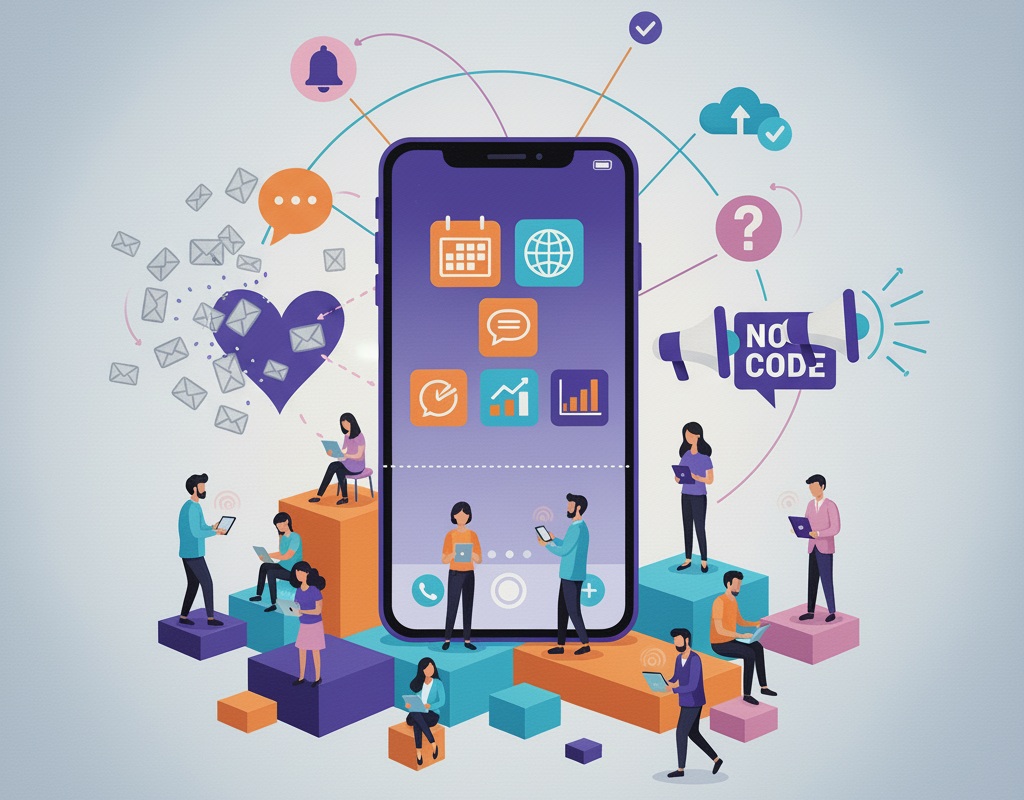Why do internal communications so often fall short?
Every organization knows communication is the backbone of culture. Yet most companies still rely on the same outdated mix of email blasts, bulletin boards, and intranet portals that employees rarely check. The result? Missed updates, disconnected teams, and mounting frustration.
Internal communication becomes even harder as companies scale or shift to hybrid work. Leaders need tools that are fast, consistent, and engaging—without adding layers of complexity.
One Yapp teammate put it plainly: “Email isn’t cutting it anymore. Employees expect the same seamless, mobile-first experience inside the company that they have everywhere else.”
That expectation is reshaping how organizations think about communication. The modern workforce wants updates where they already live—on their phones. And that’s where an internal communication app becomes the game-changer.
What happens when communication breaks down?
When communication tools fail, the impact ripples across the organization:
- Missed messages — employees skip meetings or miss crucial updates.
- Uneven information flow — field teams stay in the dark while HQ remains informed.
- Lower engagement — staff tune out communications that feel cluttered or irrelevant.
- Increased costs — printing, mailing, or managing multiple tools drains budgets.
Cole Haan experienced this firsthand. With retail associates spread nationwide, HQ struggled to maintain consistency. Some stores relied on outdated email chains; others waited for printed handouts that quickly went stale.
By adopting Yapp, Cole Haan built an internal app to centralize announcements, training modules, and campaign highlights. Employees reported clearer communication, stronger alignment, and a renewed sense of inclusion. One store manager noted that “for the first time, everyone’s on the same page—literally.”
And as outlined in our guide to transforming internal communication, going mobile leads to higher engagement, faster adoption, and fewer missed messages.
Why building your own app changes everything
Here’s the secret: you don’t need a massive budget or custom software to transform communication. With a mobile event app platform like Yapp, you can create an internal communication hub in minutes—no coding required.
This approach lets teams design a branded, centralized space for company updates, documents, and culture-building—all on employees’ mobile devices.
Benefits include:
- Centralized hub: One app for schedules, updates, and resources that employees can access anytime.
- Push notifications: Instant alerts cut through inbox clutter and keep everyone aligned.
- Personalization: Tailor content by department, role, or region for more relevant updates.
- Interactive features: Polls, Q&A, and photo sharing make communication two-way, not top-down.
- Scalability: Start small, then expand across departments or regions as adoption grows.
A Yapp teammate explained: “When leaders realize they can build their own app without IT or outside vendors, communication stops being a headache—it becomes a strategic advantage.”
That shift is what modern companies are embracing. Instead of juggling scattered tools, they’re bringing all communication into one central, accessible hub.
How to start building your own communication app
If you’re ready to level up your internal communication, here’s a step-by-step roadmap:
- Define your goals — Are you solving slow updates, low engagement, or inconsistent messaging? Clarity drives adoption.
- Choose the right platform — Look for no-code event app tools that double as internal apps. Yapp gives you drag-and-drop flexibility with enterprise reliability.
- Start with a pilot — Launch with one team or region. Gather feedback and track usage to refine before scaling.
- Add interactive elements — Use polls, feedback forms, and discussion boards to spark engagement.
- Scale and iterate — Expand to more teams, measure adoption, and evolve your content strategy quarterly.
Cole Haan followed this model successfully. What began as a small pilot quickly became the central hub for communications company-wide. Whether it was a new product launch or an HR update, every associate—from New York to Los Angeles—received the same information at the same time.
That’s the power of an internal app—it unifies voice, message, and experience.
The impact of going mobile
Companies that invest in mobile-first internal communication see measurable improvements in alignment, engagement, and employee satisfaction. When updates live in one app, employees can find what they need fast.
It’s not just convenience—it’s culture. Real-time connection keeps teams motivated and informed, especially in hybrid or distributed settings.
Another Yapp teammate summed it up: “We’ve seen companies go from cluttered inboxes to thriving communities in a matter of weeks. Once employees feel included and informed, everything changes.”
That inclusion translates directly to performance. When everyone—from field staff to executives—shares one mobile hub, silos disappear. Projects move faster, morale improves, and leadership gains visibility into communication trends through app analytics.
Why this moment matters
We’re living in an age where information moves faster than ever. Companies that cling to outdated tools will always lag behind. But those that empower employees through simple, mobile-first communication will lead.
An internal communication app doesn’t just solve for missed memos—it reshapes how teams interact, celebrate, and collaborate. It builds transparency. It builds trust.
And as seen in organizations like Cole Haan, Schools That Can, and Verizon, the ROI of strong communication is tangible. Less confusion. Faster updates. More connected teams.
The future of internal communication isn’t another platform—it’s one, unified app.
Ready to strengthen your internal communication?
Strong communication isn’t a luxury—it’s a necessity. With Yapp, you can build your own internal app in minutes, unify your workforce, and give employees the clarity they deserve.
Start your free trial and see how easy it is to transform communication from noise into alignment.










